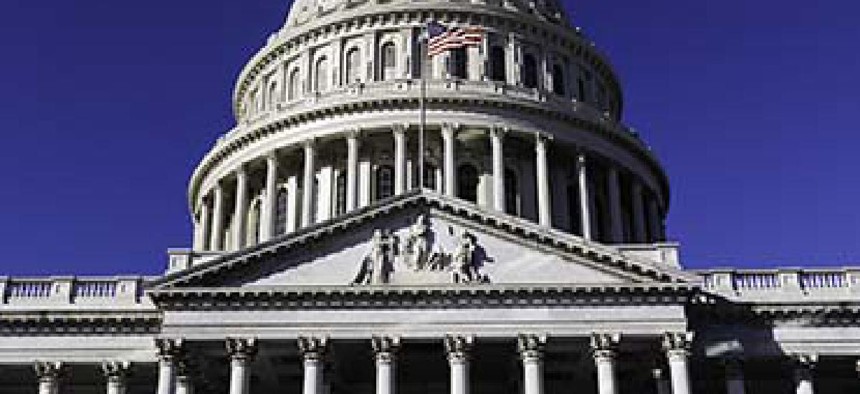Why Congress lags in tech

Congress is failing to integrate advanced IT into its day to day operations and tight budgets, staff turnover and decentralization are just some of the reasons why.

Congress is lagging behind the executive branch in terms of its ability to integrate advanced IT into its day-do-day operations.
Technology policy experts probed the reasons for this gap at a Jan. 17 Capitol Hill event hosted by New America and the R Street Institute.
One big problem is cutbacks.
"What we're seeing is, on one side, over a thousand fewer committee staff in the House over the last 20 years, and not necessarily things that help replace that loss of capacity to perform [their] functions," said Daniel Schuman, policy director of DemandProgress. "That capacity piece is incredibly important, but the way Congress functions, it doesn't usually think of things in that kind of way."
Instead, Schuman said that Congress tends to be more preoccupied with "how do I deal with my constituents, how do I do legislative work and how do I do oversight?"
Schuman said he thinks "small amounts of tech investment" can help Congress better address these questions by improving its internal operations, and pointed to 18F and the U.S. Digital Service as examples of successful tech innovation programs on the executive side.
The decentralization of Capitol Hill also poses a challenge. Each member office and committee constitutes its own separate entity where a lot of tech buying and operations are concerned. BUt increased efficiency requires better coordination, pushing forward tech capacity as a priority and "rethinking the way Congress itself functions," Schuman said.
One possibility, Schuman proposed, was rather than having each office individually spend thousands of dollars on incremental tech upgrades, pooling that money for upgrades.
Improved coordination within Congress can improve internal functions, as well as more effectively address constituent concerns, said operations associate at the OpenGov Foundation Meag Doherty.
Each office has a different website with different policies, which can be confusing for constituents, she said. "So not only are we facing problems internally, but we're also having an impact – not in a positive way – for our constituents."
Schuman said that other solutions include more rigorous technical education for staffers, to teach them to use the tools at their disposal.
However, the training of staffers isn't always going to pay dividends, because that staff "get paid quite poorly, and staff pay is going down yearly," said R Street fellow Sasha Moss. It is unrealistic to expect to retain staffers who are qualified to make tech decisions, or to retain them for long enough to apply what they have learned, Moss said.
To address these dilemmas, Schuman said that improving the state of technology will require a budget increase. Such an investment could also help bolster the House system cybersecurity, which has "really obvious failings," said Schuman, pointing to users' reliance on outdated and weak e-mail security protocols.
Additionally, he suggested the possibility of creating a centralized congressional chief technology officer or chief open data officer position.
"There needs to be a person or a set of people that focus solely on this stuff from a branch-wide perspective and can help offices and members and committees" with their open data and tech problems, Schuman said.


